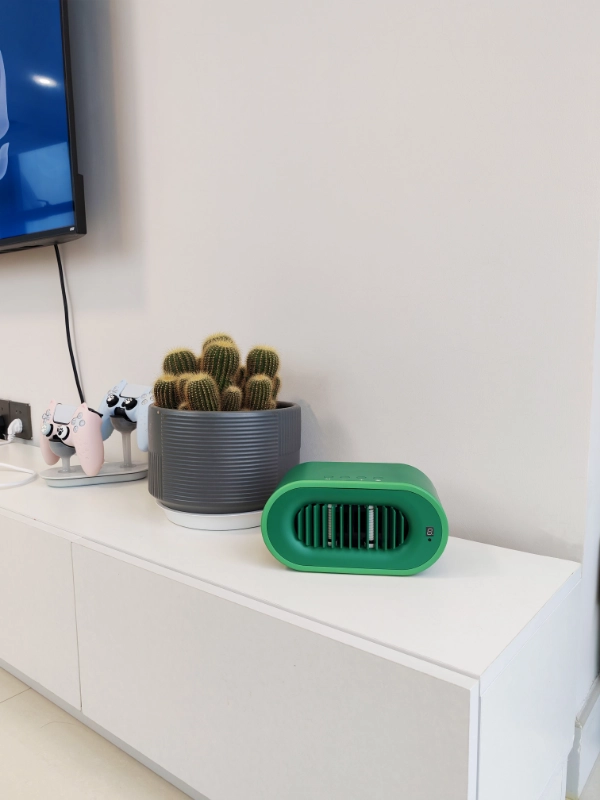Air pollution and indoor air quality concerns have fueled the rise of advanced air purification technologies. Among them, plasma air purifiers stand out for their efficiency in eliminating airborne contaminants, neutralizing odors, and improving overall air quality. In this blog post, as a high performance air purifier with plasma supplier, RUIAIR will share the high quality plasma air purifier manufacturing process.
Understanding Plasma Air Purifier
Before diving into the manufacturing process, it' s crucial to understand how plasma air purifiers work. Unlike traditional HEPA filters, which physically trap particles, plasma air purifiers generate ionized gases that break down pollutants at a molecular level. This technology effectively removes bacteria, viruses, mold spores, and volatile organic compounds (VOCs), making it a preferred choice for homes, offices, and industrial spaces.
Step-by-Step High Quality Plasma Air Purifier Manufacturing Process
1. Research and Development (R&D)
The first stage of plasma air purifier manufacturing is research and development. Engineers and scientists work together to design a high-performance product that meets safety and efficiency standards. During this phase, manufacturers:
- Conduct market research to identify customer needs
- Develop innovative plasma ionization technologies
- Test various filter materials and purification techniques
- Design prototypes using computer-aided design (CAD) software
This phase ensures that the final product will be effective in purifying air while remaining energy-efficient and cost-effective.
2. Material Selection and Sourcing
Once the design is finalized, manufacturers select high-quality materials to ensure durability and efficiency. Key components include:
- Electrodes: Essential for generating plasma ions
- Filters: Often combined with additional HEPA or carbon filters
- Circuit Boards: Power and control units for efficient operation
- Outer Casing: Designed to house all internal components and ensure user safety
- Fan and Motor: Facilitates air circulation through the device
Manufacturers work closely with suppliers to source these materials while maintaining cost efficiency and environmental responsibility.
3. Component Manufacturing
The production of key components takes place in specialized manufacturing units. The process includes:
- Injection Molding: Used for plastic casing and other structural parts
- Metal Stamping: Produces durable electrodes and internal electrical components
- PCB (Printed Circuit Board) Assembly: Ensures proper functioning of electronic controls
- Filter Fabrication: May involve layering HEPA, activated carbon, or other specialized filters
Automated machinery ensures precision, while human quality control experts inspect components for defects.

4. Assembly Line Production
Once the components are ready, they move to the assembly line, where skilled workers and robotic systems piece together the air purifier. The assembly process follows these steps:
- Mounting the Electrodes: The ionization system is carefully installed
- Installing the Circuit Board: Ensures proper electrical operation
- Fitting the Filters: Ensures optimal air purification performance
- Housing and Sealing: The outer casing is secured to protect internal components
- Testing and Calibration: The unit is checked for performance, power efficiency, and safety compliance
Many manufacturers use robotic arms for precision assembly, reducing human error and increasing efficiency.
5. Quality Control and Testing
Before an air purifier reaches the consumer, it must pass rigorous quality assurance tests. Common tests include:
- Airflow Efficiency Tests: Ensures proper air circulation and purification
- Plasma Ion Emission Testing: Verifies the generation of ions for pollutant neutralization
- Safety Compliance Checks: Ensures the unit meets industry and government safety standards
- Durability Tests: Simulates long-term usage under various environmental conditions
Only after passing these tests is the unit approved for packaging and distribution.
6. Packaging and Distribution
The final stage involves packaging the plasma air purifiers to ensure they reach consumers in perfect condition. Manufacturers use:
- Shockproof Packaging: Protects against damage during transit
- Eco-Friendly Materials: Reduces environmental impact
- User Manuals and Warranties: Provides clear usage instructions and customer support details
The units are then distributed through retail stores, e-commerce platforms, and direct-to-consumer channels.
Final Thoughts
The plasma air purifier manufacturing process is a blend of advanced technology, precision engineering, and quality control. From R&D and material selection to assembly and testing, each stage ensures the production of high-performance air purification systems. As demand for clean air continues to grow, manufacturers are investing in cutting-edge innovations to enhance efficiency and sustainability.
With a better understanding of the manufacturing process, consumers can appreciate the effort that goes into creating these powerful devices, making indoor spaces healthier and safer for everyone.
https://www.sh-ruiair.com/Plasma-Air-Purifier-Manufacturing-Process.html
www.sh-ruiair.com
RUIAIR
